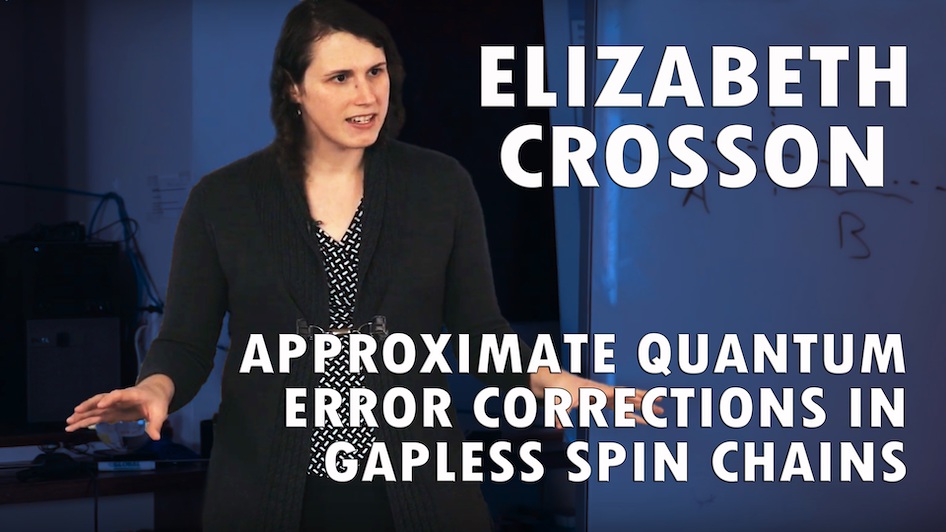

For five repetitions we’d need at least three replies to be garbled to flip the majority, which happens with probability \sim p1^3.

The fact that p3
#APPROXIMATE QUANTUM ERROR CORRECTION CODE#
The code cell below shows an example of this. When encoded in this way, the message therefore becomes more likely to be understood. The probability for this, P, will be less than p. To be misunderstood in this case, at least two of the replies need to be garbled. If they hear ‘no, yes, yes’, ‘yes, no, yes’ or ‘yes, yes, no’, they will probably conclude the same thing, since there is more positivity than negativity in the answer. If the receiver hears ‘yes, yes, yes’ in this case, they will of course conclude that the sender meant ‘yes’. The simplest method is the one that many would do without thinking: simply repeat the answer many times for example, say ‘yes, yes, yes’ instead of ‘yes’ or ‘no, no, no’ instead of ‘no’. Instead we must encode our answer in a more complex structure, allowing the receiver to decode our meaning despite the possibility that the message is disrupted. The probability of being misunderstood would be too high. A single ‘yes’ or ‘no’ is not enough in this case. Then p is the probability that you are completely misunderstood.Ī good connection or a relatively unimportant question will result in pP_a. Similarly, a ‘no’ is transformed into ‘yes’. For simplicity, let’s imagine a case where a garbled ‘yes’ doesn’t simply sound like nonsense, but sounds like a ‘no’.

If you are being asked a question on which someone’s life depends, however, P_a will be much lower.įor the second we can use p, the probability that your answer is garbled by a bad connection. If you are being asked to confirm a preference for ice cream flavors, and don’t mind too much if you get vanilla rather than chocolate, P_a might be quite high. For the first, we can use P_a, the maximum acceptable probability of being misunderstood. How important is it that you are understood correctly?īoth of these can be parameterized with probabilities. If someone asks you a question to which the answer is ‘yes’ or ‘no’, the way you give your response will depend on two factors: We can therefore begin by considering a very straightforward example: speaking on the phone. The basic ideas behind error correction are the same for quantum information as for classical information. Note: This tutorial draws heavily from the excellent tutorials 1 and 2.Ī few more excellent references for an introduction to quantum error correction are 3, 4, 5, and 6. Shots : int = 1000 # Number of shots to run each circuit for Run basic quantum error correction ¶ © 2012 American Physical Society.Configuration, properties, and versioning This work generalizes our earlier approach of using the transpose channel for the approximate correction of subspace codes to the case of subsystem codes, and brings us closer to a unifying framework for approximate QEC. Furthermore, for certain classes of subsystem codes and noise processes, we prove the efficacy of the transpose channel as a simple-to-construct recovery map that works nearly as well as the optimal recovery channel. Here, we demonstrate easily checkable sufficient conditions for the existence of approximate subsystem codes. Subsystem codes extend the standard formalism of subspace QEC to codes in which only a subsystem within a subspace of states is used to store information in a noise-resilient fashion. Motivated by this, we investigate the problem of approximate subsystem codes. Recent work on approximate quantum error correction (QEC) has opened up the possibility of constructing subspace codes that protect information with high fidelity in scenarios where perfect error correction is impossible. Physical Review A - Atomic, Molecular, and Optical Physics 86 (1) :. Towards a unified framework for approximate quantum error correction. Towards a unified framework for approximate quantum error correction


 0 kommentar(er)
0 kommentar(er)
